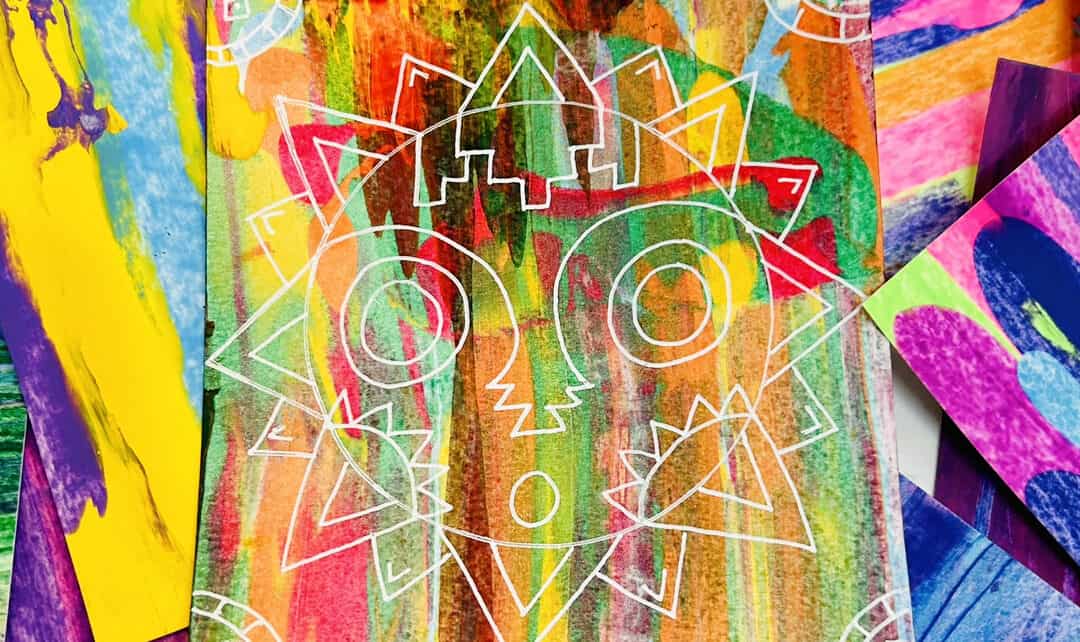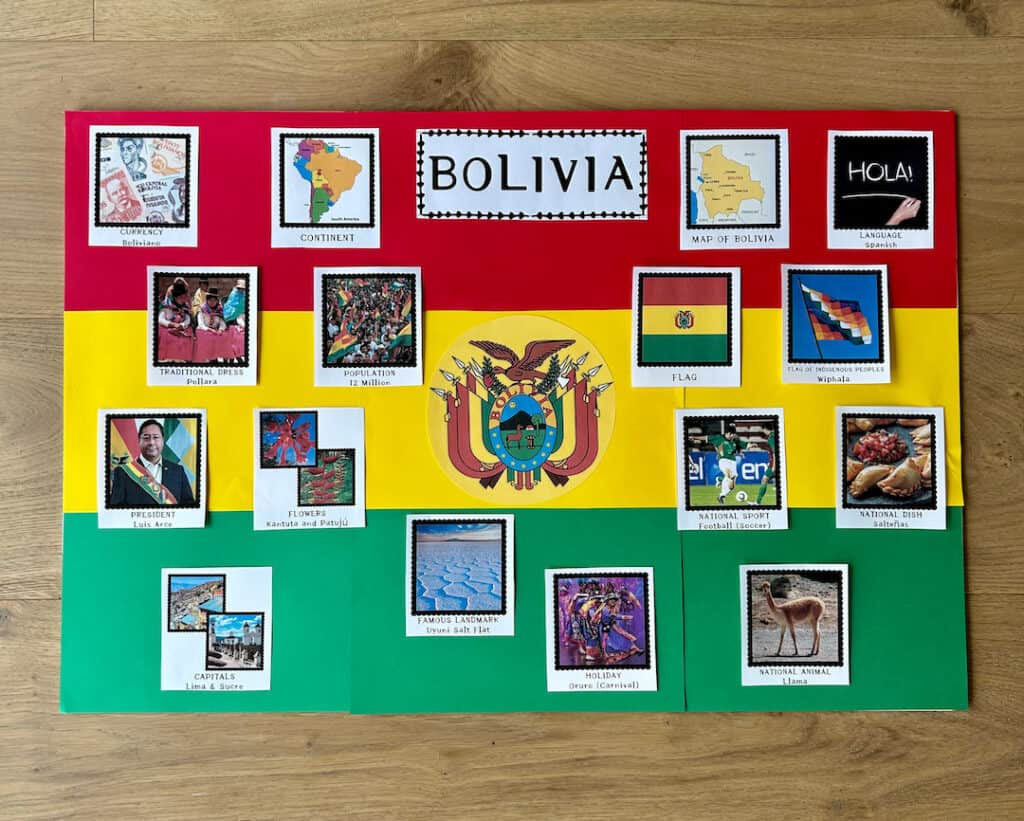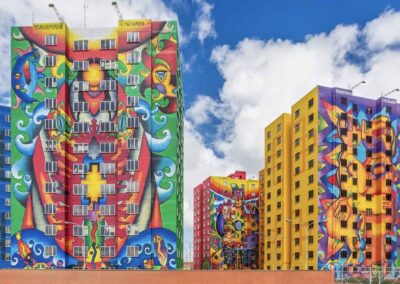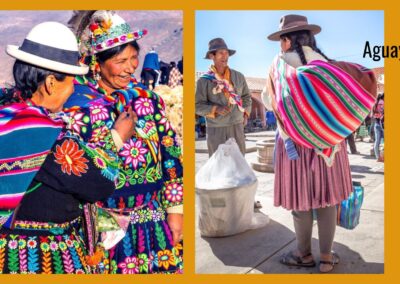In this blog post, I will share the details of the Bolivia art and cooking project we just wrapped up for our Bolivia Unit. Don’t miss our FREE recipe download below and my 21-page digital download, Bolivia Country Facts Board to supplement this project.
COLORFUL BOLIVIA ART FOR KIDS
ROBERTO MAMANI MAMANI-INSPIRED ART
For our art, the focus was on Roberto Mamani Mamani who is an Aymara artist from Bolivia. His work is significant in its use of Aymara indigenous tradition and symbols. His art has been exhibited around the world, including shows in Washington, D.C., Tokyo, Munich, China, Singapore, and London.
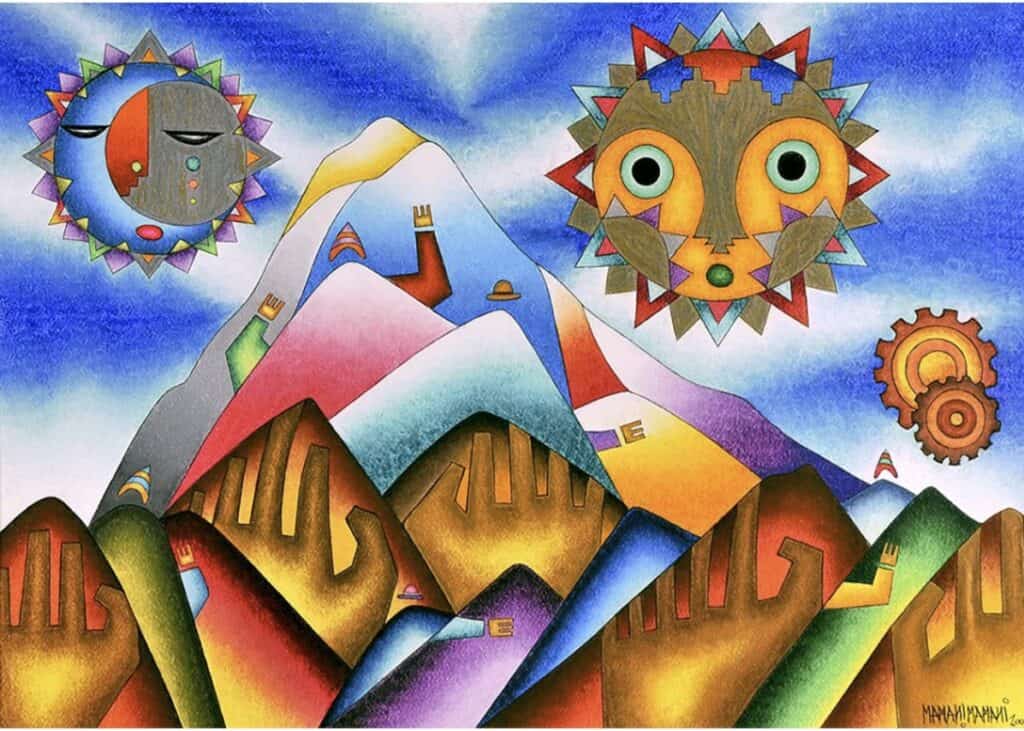 I picked Mamani Mamani’s art for its bright colors, which I knew my students would love, but also for the symbolism in his art which serves to share and preserve the deep-rooted traditions of the Aymara people of Bolivia.
I picked Mamani Mamani’s art for its bright colors, which I knew my students would love, but also for the symbolism in his art which serves to share and preserve the deep-rooted traditions of the Aymara people of Bolivia.
Our art class is only an hour and a half so to have mimicked a full painting in true Mamani Mamani style would not have been possible. Instead, we coated 5.5-inch square pieces of watercolor paper with our favorite bright, Mamani Mamani colors using a catalyst wedge – or, in this case, a credit card – which worked perfectly.
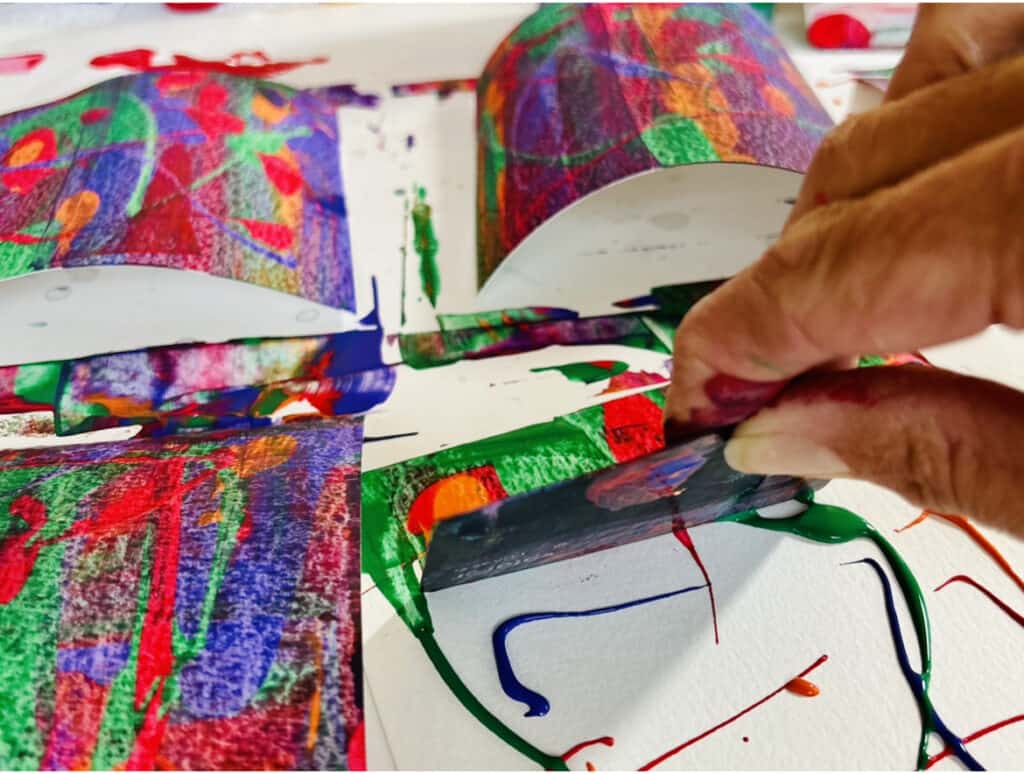
While these were set aside to dry, I gave my presentation about Roberto Mamani Mamani and the Aymara people of Bolivia. Here are some of the slides I created to tell about his life, his mission, his art, and his heritage.
After many student questions and a great discussion about aspects of the art and Aymara people, we launched into the second part of our art project which was drawing the sun from one of my favorite Mamani Mamani paintings.
We used white gel pens, but you could easily use a fine, white paint pen or white sharpie. If you use gel pens, ensure they are of good quality or they will not show as vividly on the painted page.
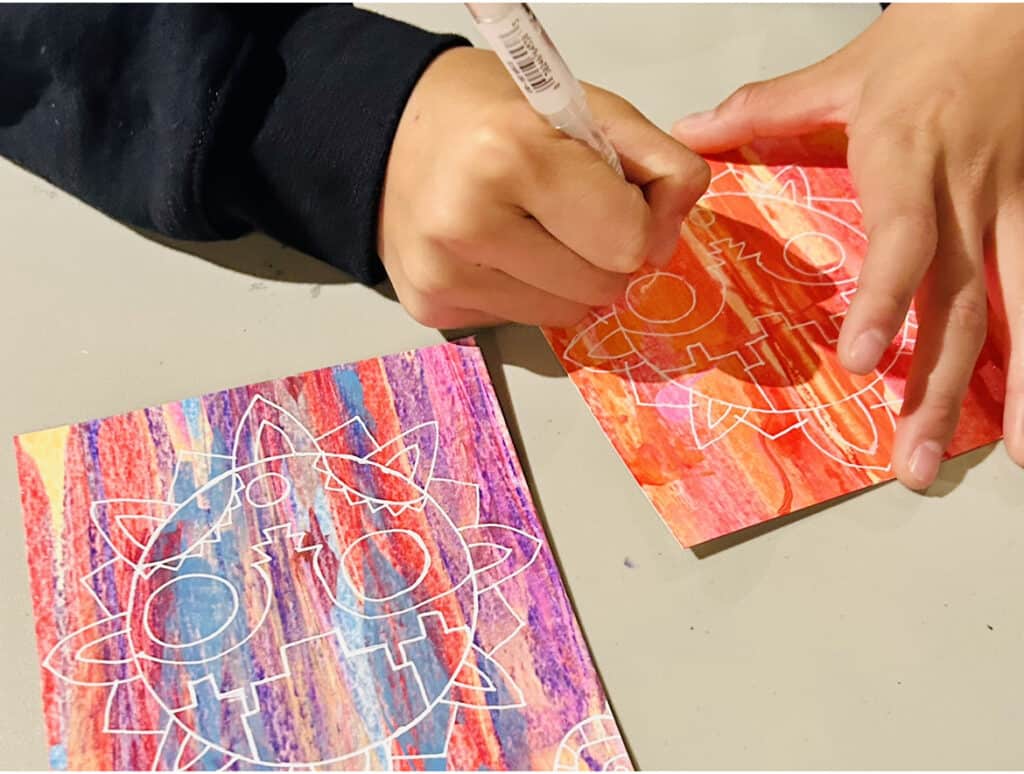
I gave each student a pre-cut circle template to give them the option of tracing a circle on the page before we began drawing the details of the sun. All students opted in for that!
I used my overhead webcam to instruct on how to draw the sun and many students added beautiful details of their own.
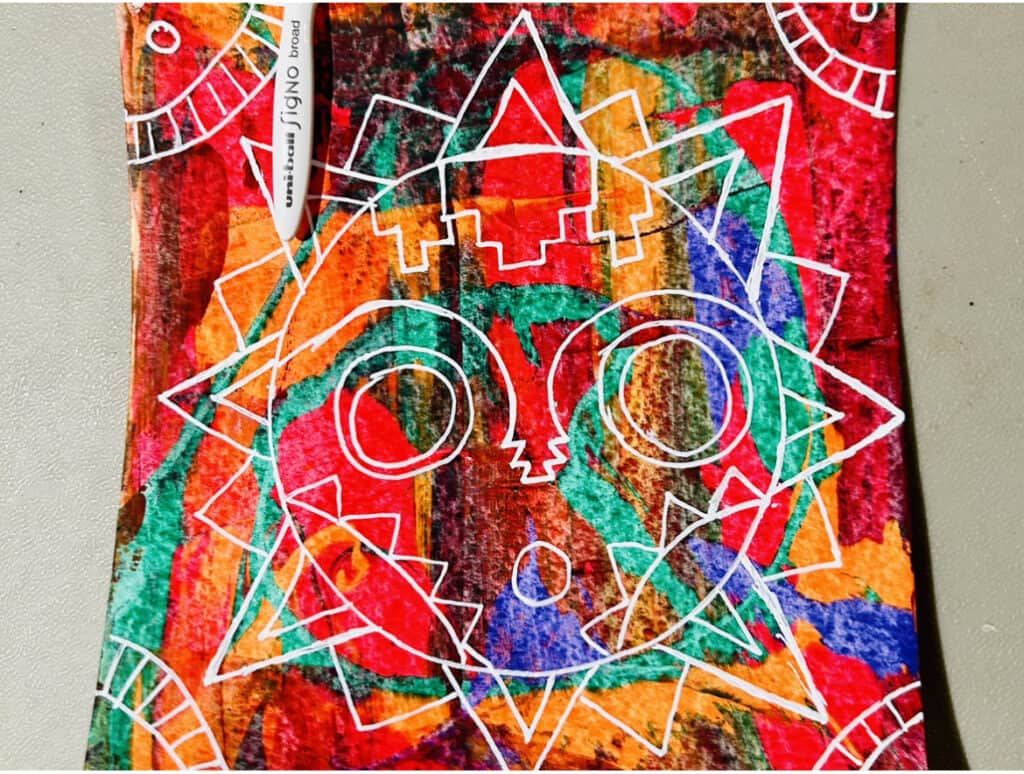
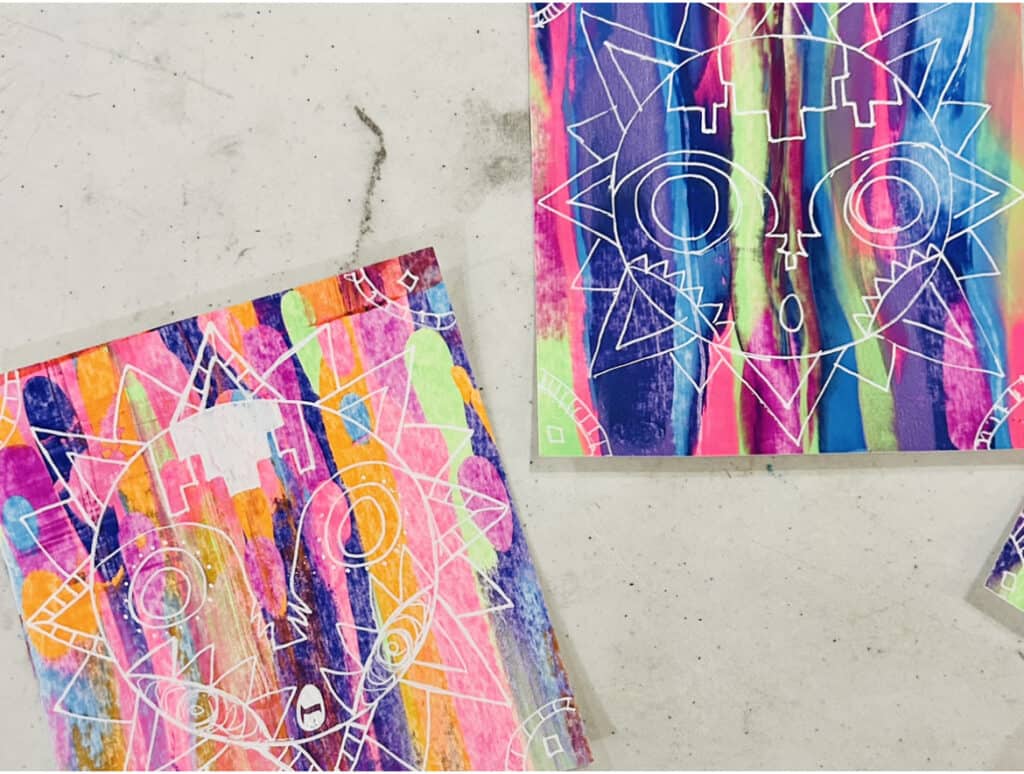
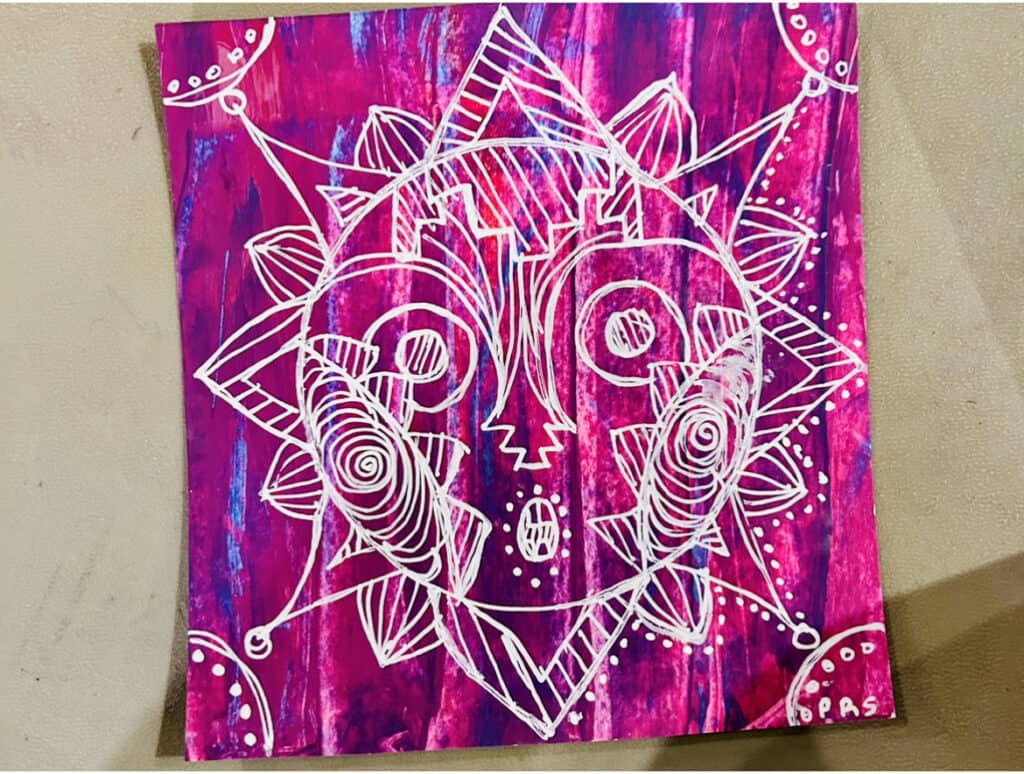 You could definitely expand the project by using bigger pieces of paper and drawing a more robust scene from any of Mamani Mamanis’ paintings. You could even let your students choose their own favorite painting to mimic. These would also be beautiful greeting cards!
You could definitely expand the project by using bigger pieces of paper and drawing a more robust scene from any of Mamani Mamanis’ paintings. You could even let your students choose their own favorite painting to mimic. These would also be beautiful greeting cards!
I highly encourage you to try this Bolivia art project with your children or students!
OJOS DE DIOS (GOD’S EYES)…
Our second art project perfectly tied in another very important aspect of Bolivian culture – weaving. The Aymarans are known for their woven clothing and “aguayos”, a rectangular carrying cloth used by most Bolivian women to carry everything from children to supplies.
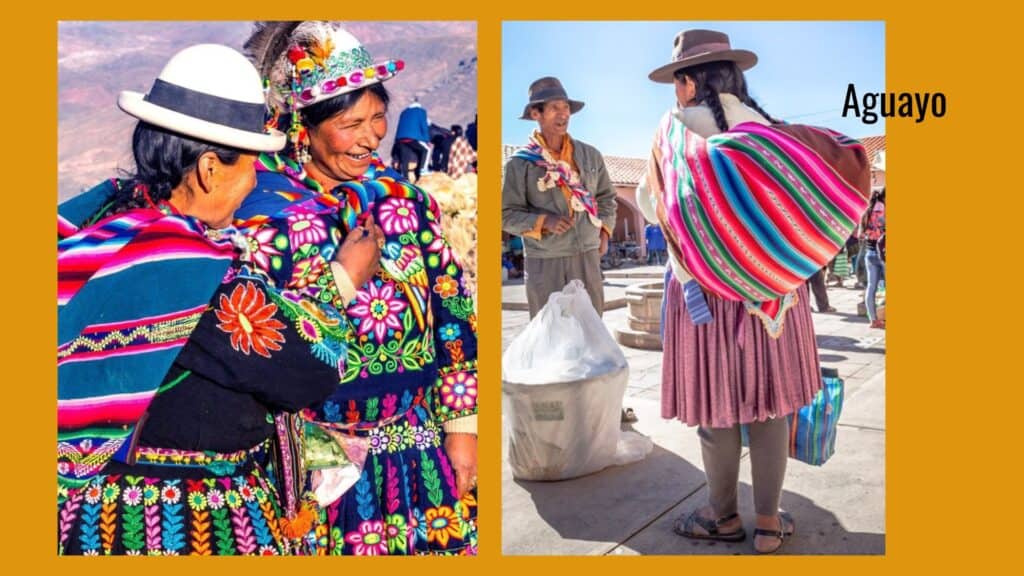 It just made sense to weave God’s eyes with brightly colored yarn as the Aymarans might use. A God’s eye is a spiritual object made by weaving a design out of yarn upon a wooden cross. They are commonly found in Latin American countries.
It just made sense to weave God’s eyes with brightly colored yarn as the Aymarans might use. A God’s eye is a spiritual object made by weaving a design out of yarn upon a wooden cross. They are commonly found in Latin American countries.
To save time and possibly a big knotted mess, I pre-cut four yarn colors for each of my 15 students, tied them together, and wrapped them around a spoon. This was very time-consuming (I listened to two whole podcasts), but so worth it in the end as I simply handed them out, wasting no class time.
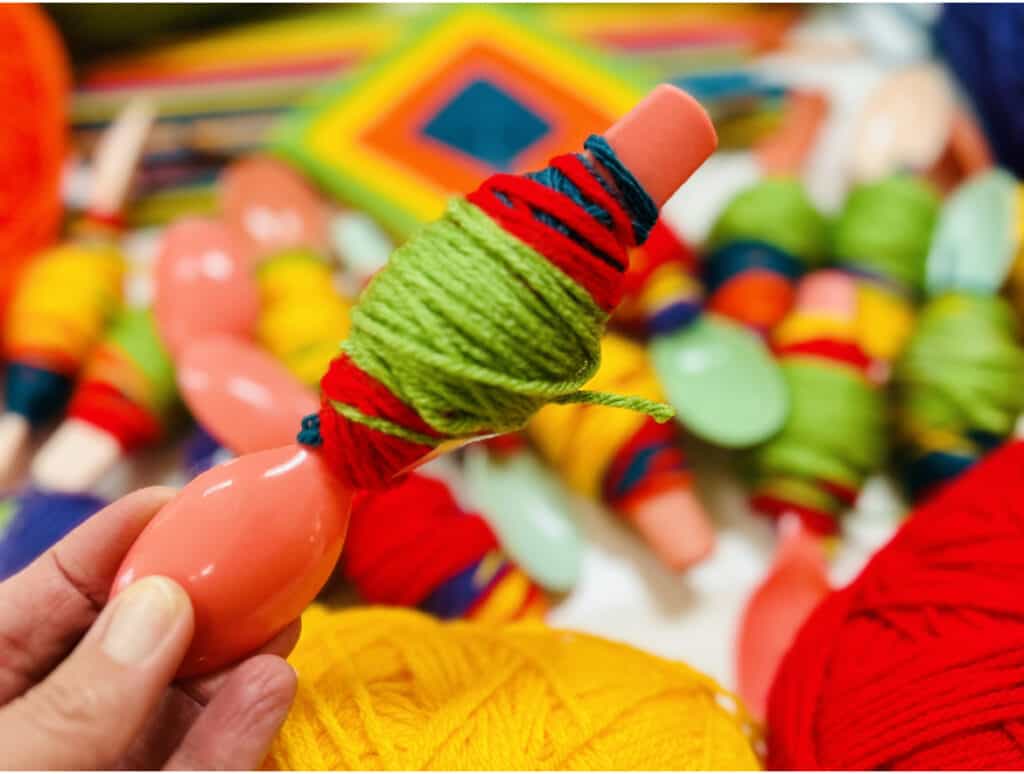
I bought long, colorful dowels for this project (collected sticks from the outdoors work well too).
The students really enjoyed the meditative process of weaving the yarn around and around the cross to complete their God’s eyes. In hindsight, I wish I would have played some traditional Bolivian music while we worked on this project. It would have been a nice, calming touch.
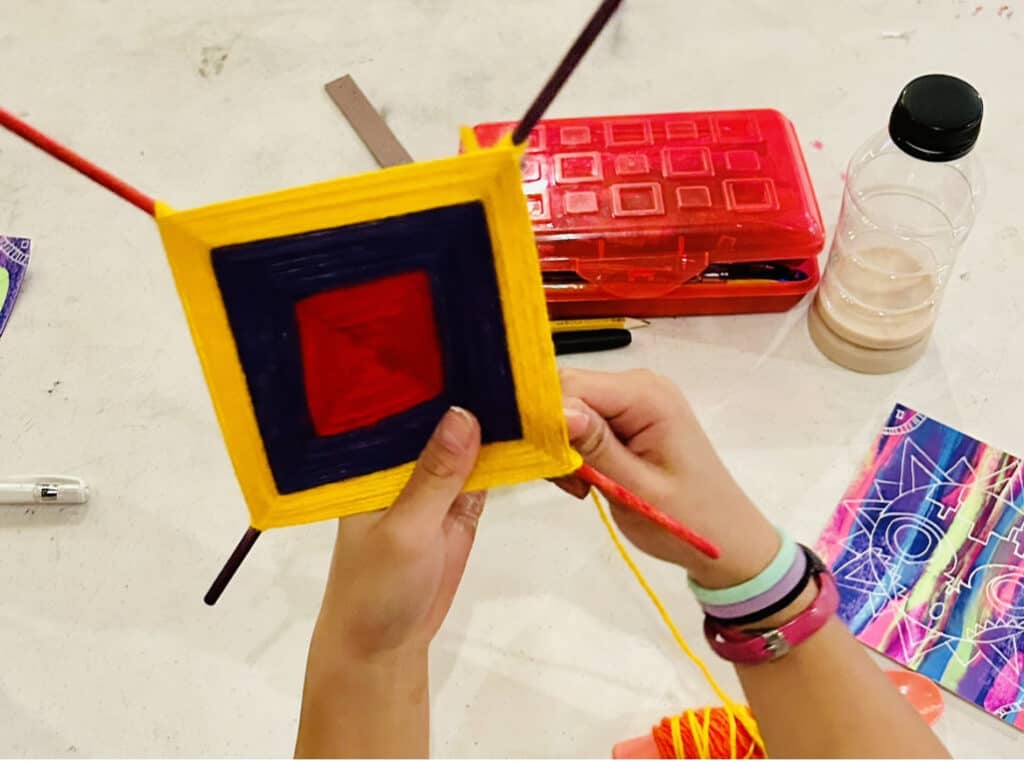 If you are not familiar with how to make a God’s eye, I would recommend finding a YouTube video tutorial. It had been about 30 years since my last one so this was my go-to!
If you are not familiar with how to make a God’s eye, I would recommend finding a YouTube video tutorial. It had been about 30 years since my last one so this was my go-to!
TRADITIONAL BOLIVIA COOKING TO BOOST YOUR BOLIVIA UNIT
SALTEÑAS, THE NATIONAL DISH OF BOLIVIA
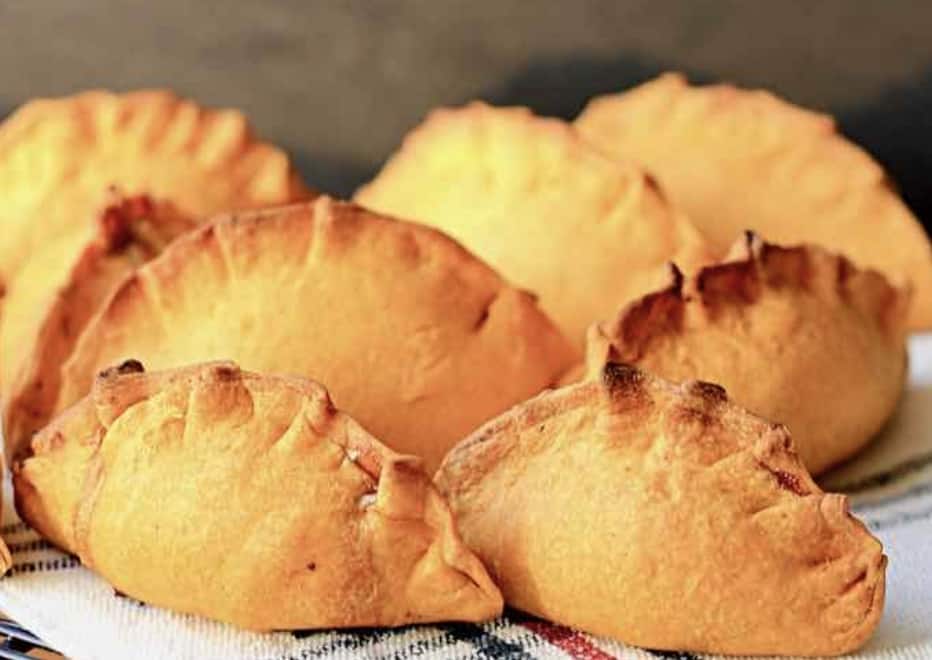
At the homeschool coop where I teach, I was asked to teach one art class and one cooking class for each country we study this year.
For Bolivia, I chose salteñas, the national dish of Bolivia. Salteñas are savory pastries filled with beef, pork, or chicken mixed in a sweet, slightly spicy sauce containing olives, raisins, and potatoes. I knew I could easily mimic these using Puff Pastry Sheets and a simple ground beef mixture. You can also find an empanada dough recipe online if you choose.
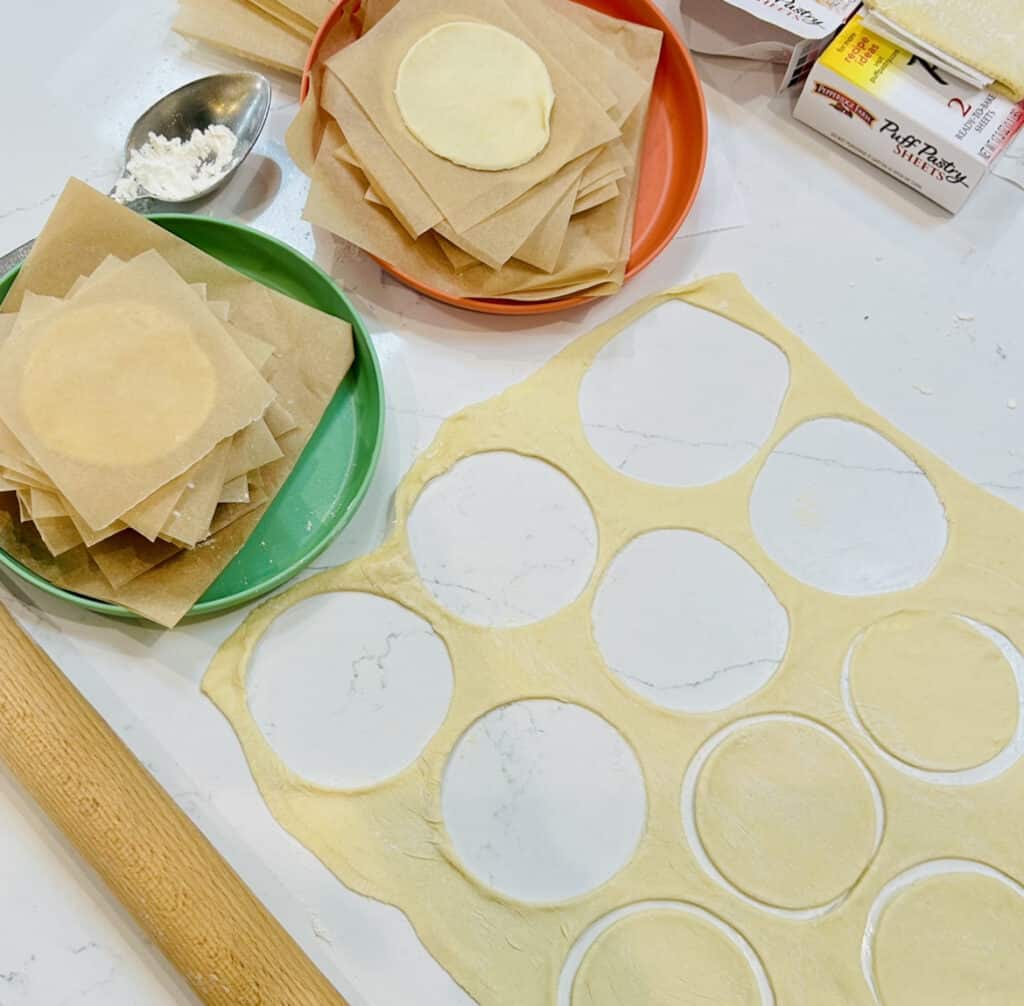 To save time, I pre-cut each empanada circle round and brought them to class with me. If you roll out the Puff Pastry sheet you can get a good number of empanada circles from each sheet.
To save time, I pre-cut each empanada circle round and brought them to class with me. If you roll out the Puff Pastry sheet you can get a good number of empanada circles from each sheet.
I cooked a delicious, yet simple, ground beef filling that I divided up for each table group in class. I have no photos of my students making these empanadas, but the proof is on this baking sheet!
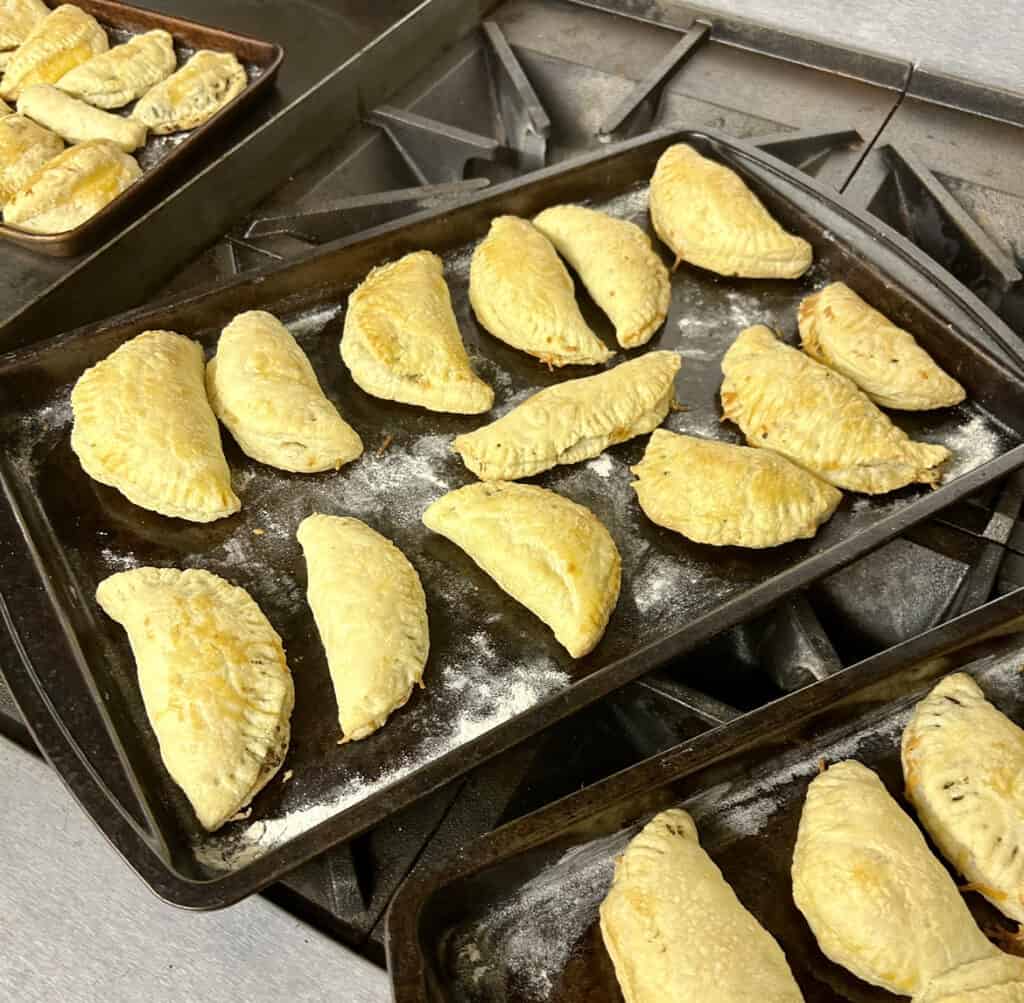 These are not quite as beautiful as the salteñas you would order in Bolivia, but the flavor of seasoned beef and flaky baked pastry definitely made up for it.
These are not quite as beautiful as the salteñas you would order in Bolivia, but the flavor of seasoned beef and flaky baked pastry definitely made up for it.
To download and print this recipe, click here!
Enjoy!
I hope this post inspired you to learn more about Bolivia and plan a Bolivia art and cooking class with your children or students. Please leave any questions or comments below!
